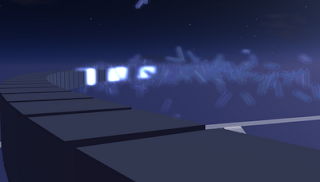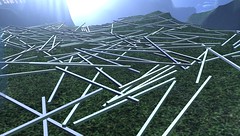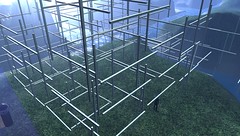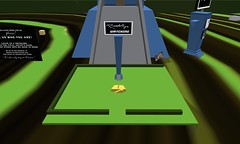here's part of my comment at the BiW blog to some of the reactions to the work:
what the bot chats is “rather empty”, it lacks subtlety, it quickly becomes “boring and annoying”. yes. this was my intention. the bot’s phrases are dull, repetitive, and uninformed. that’s the reason why i used a pretty simple ‘algorithm’ for generating the phrases, about 20 prefabricated ones (including one with a typo) with a placeholder for the work. far from anything intelligent. i even chose a fixed delay between each utterance, which adds to the machine-like stupidity.why creating such a work? this spambot was my reaction to the decreasing quality of discourse at BiW, a reflection on the current state of BiW, and as such it should mention the names of the objects on the sim and their owners, but it was intended to be uninformed and annoying (again: i really like the comment in the podcast: smart but uninteresting, yes!).







